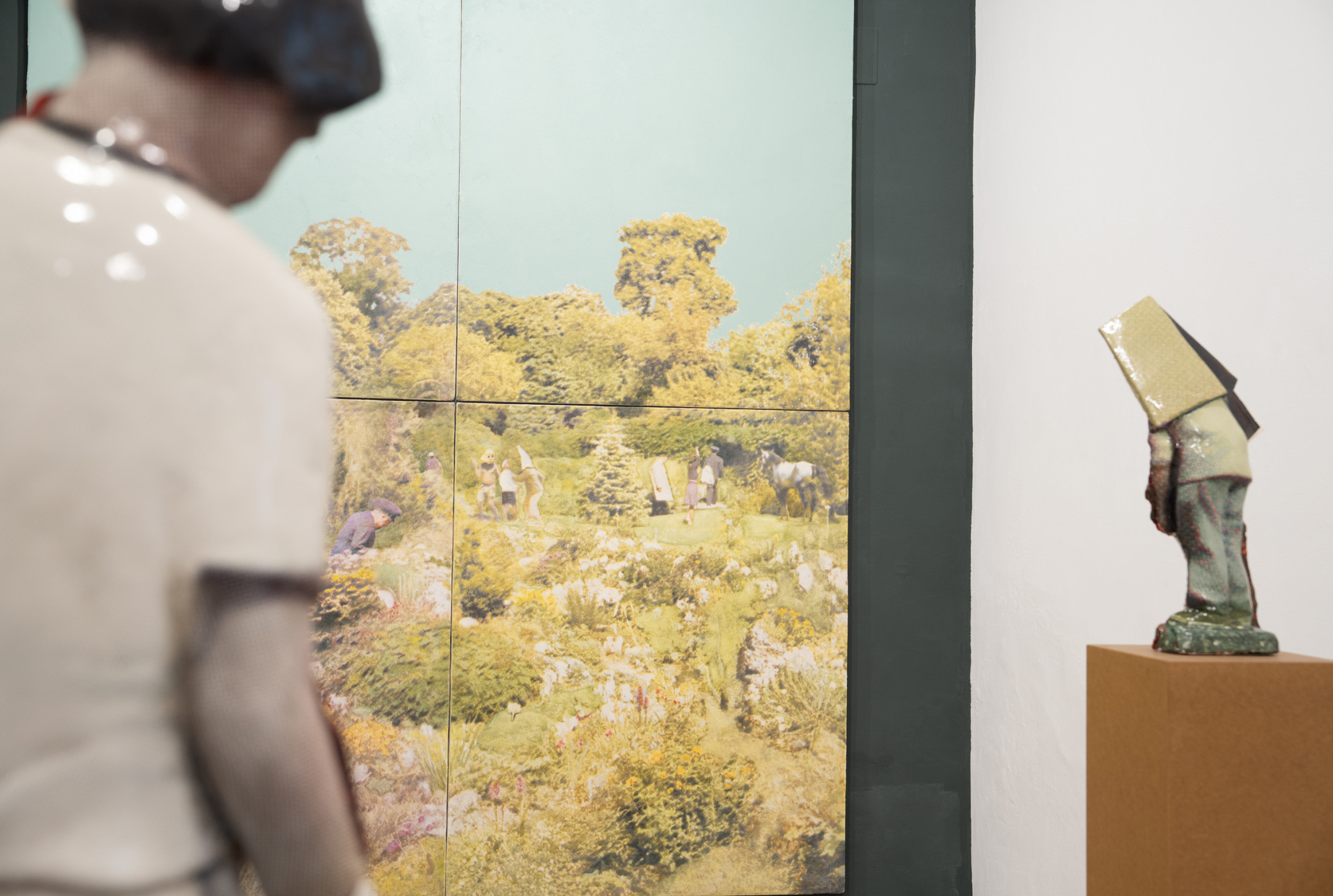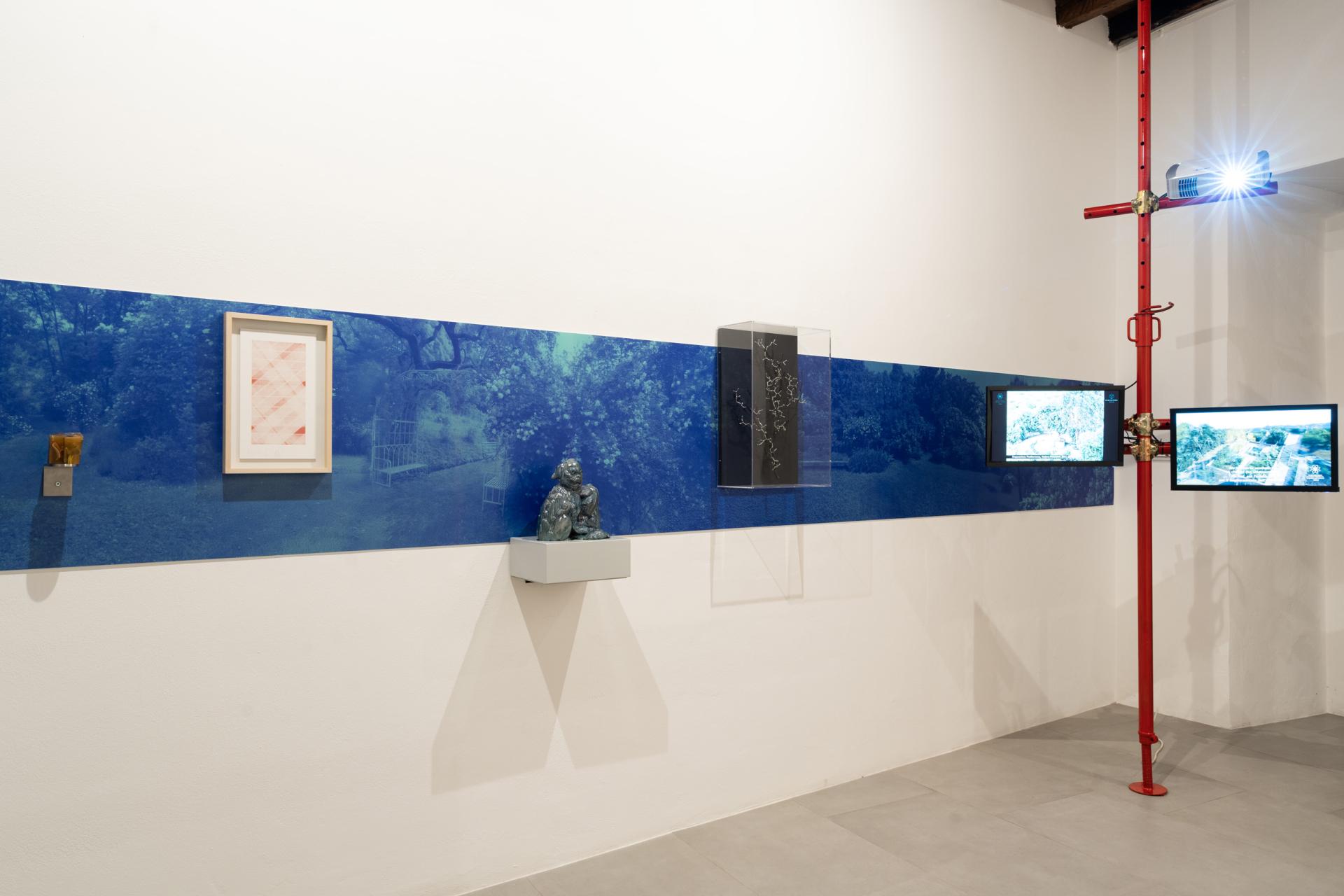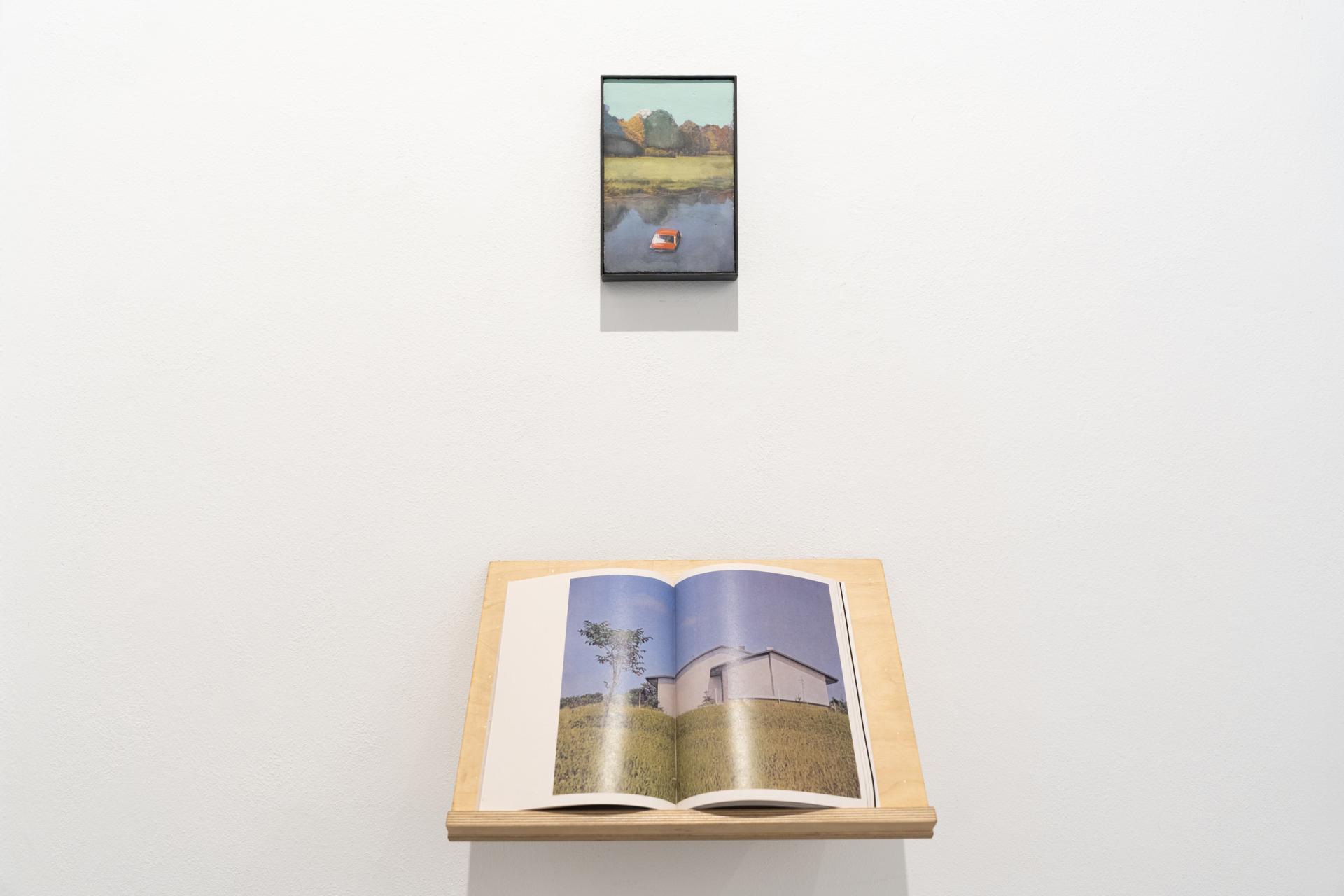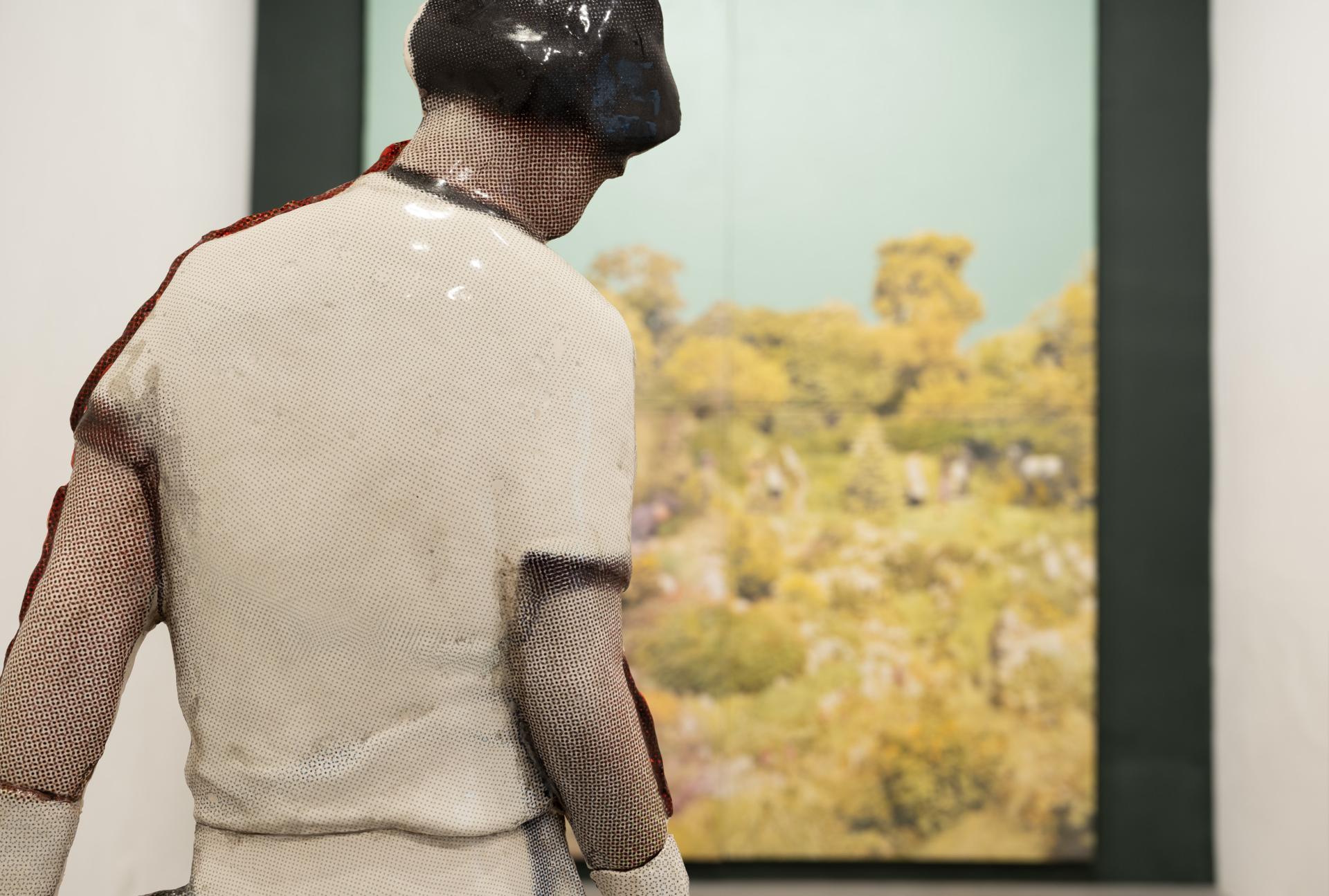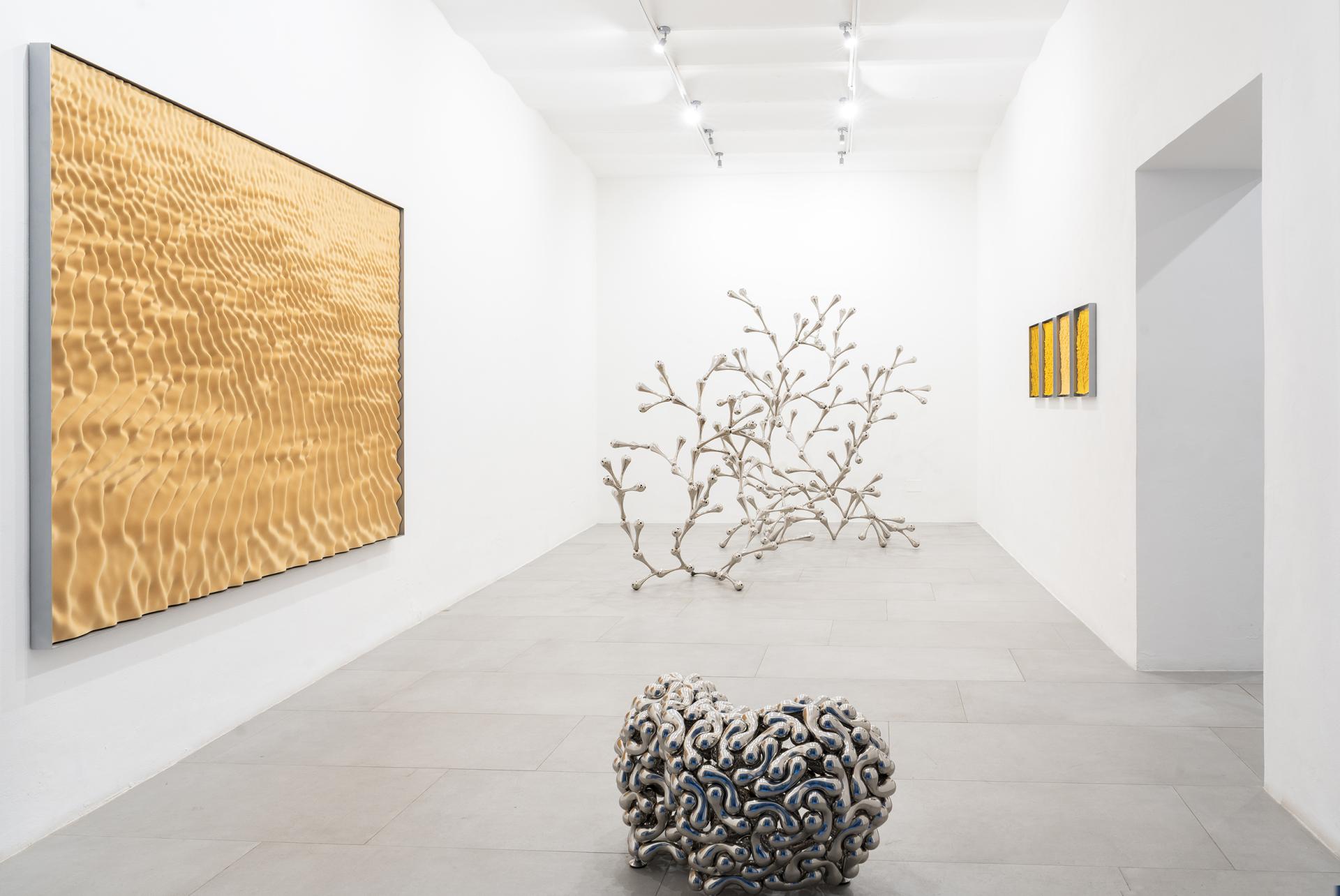Loris Cecchini, Richard Deacon, Daniele Franzella
GARDEN
GARDEN, a three-person exhibition by the artists Loris Cecchini, Richard Deacon and Daniele Franzella.
The exhibition is realized with the cultural contribution of Daniela Bigi, Fondazione Radicepura and Ground Action and under the patronage of the Academy of Fine Arts of Palermo.
The garden as a symbolic form, a place for the exercise of rationality and logical-mathematical creations, a paradisiacal translation and status of a political power that, through the collection of botanical species, defines the image of its wealth, both in the private and public dimension.
In the rationality of the verzura theatres typical of Italian gardens or in the natural artificiality of Capability Brown's English style, the construction of the garden is a gentle and subversive act, a tyrannizing of nature by modifying the world as it is, imposing an order.
As in Roussel's Locus Solus, the garden becomes a metaphor for the creative mind and the artistic process, a place of wonders and oddities where every invention, steeped in meaning and symbolism, is accompanied by a reflection on the relationship between art and the environment, a meeting place between human action and nature.
A living and sentient organism, the garden reveals itself as a creative and thinking entity that inhabits the minds of those who interact with it, assimilating and elaborating their thoughts and impulses. A garden-subject capable of dreaming the architectures that define it, a visual language through which the garden communicates its identity.
In GARDEN, the three artists on display propose different and complementary visions of the idea of a garden. Three positions to lead visitors to a place of meditation or bewilderment, of rigor and control where abstraction and nature become a system.
The exhibition is completed by a scientific apparatus set up with a text by Daniela Bigi and with archive material from the Radicepura Foundation and the Ground Action collective.
Loris Cecchini (Milan, 1969) is one of the most important Italian artists on the international scene, famous for his large-scale installations that elaborate concepts of organic growth and natural processes. Through the use of different materials and innovative techniques, Cecchini creates complex works that explore the limits of artistic creation, with constantly evolving results. His works, ranging from domestic to museum and environmental size, combine photography, drawing, sculpture, 3D processing and installations in a unitary poetics. The biological metaphor and movement represent the fundamental principles underlying his research, acting as a starting point for his projects, managing to capture the essence of plant life in forms that challenge conventions. An imaginary that feeds on the relationship between nature, culture, aesthetics and architecture, and that finds a synthesis in the osmosis and stratification of materials.
The most recent installations built on stainless steel modules use the organism as a recurring theme to explore the complex evolution of art in relation to space and science. In a rich variety of works, his steel modules combine to form images of climbing plants, corals or crystalline structures, developing organically in a series of surprising trajectories. A repeatable element, designed to be composed in different ways, the module is the primordial nucleus through which potentially unlimited organisms can grow, rhizomatic entities that follow a development similar to that of plants where decentralized forms of organization are repeated until they form vast and complex structures.
Loris Cecchini has exhibited in solo and group shows at prestigious museums in the major cities around the world, has participated in the most important international exhibitions and has created permanent and site-specific installations in public spaces in Italy and abroad.
Richard Deacon (Bangor - Wales, United Kingdom, 1949) is an internationally renowned British artist who was awarded the prestigious Turner Prize in 1987. He creates sculptures that combine artisanal value and sophisticated engineering techniques. Working with a wide range of materials - from laminated wood to steel, from clay to polycarbonates, from fabrics to cardboard - Deacon creates works that respond to different scales, from domestic and museum to urban and environmental, involving the viewer in a dialogic process that often finds its fulcrum, or engine, in an idea of emptiness that acts as the generative, physical and symbolic nucleus of his complex structures. His complex forms, with great perceptive impact and strong aesthetic presence, escape the most immediate meanings, forcing us to stop, to think, to question ourselves, and perhaps, as has been written on several occasions, even to dream.
Although he works in the field of sculpture, Deacon has always worked in terms of continuous experimentation, both in terms of techniques and in terms of the study and manipulation of materials, in the relationship with space and its possible semantics, moving from sculpture to audio-video, from painting to decoration, from experimental languages to graphic art, from animation to art education.
With over five hundred exhibitions in private and public museum spaces in the major cities of the world, invited to the most prestigious events on the international scene, awarded with highly relevant prizes and commissioned to create important public works, Deacon has also dedicated a lot of time to teaching, first in various British institutions and then, for many years, at the École Nationale Supérieure des Beaux-Arts in Paris and at the Kunstakademie in Düsseldorf.
In 2024, the Academy of Fine Arts in Palermo awarded Richard Deacon the title of Honorary Academician.
Daniele Franzella (Palermo, 1978) artist engaged in a refined theoretical research mainly conveyed through the language of sculpture and installation, investigates the evocative power of images and their nature as a manipulable language, in a recurring exercise of semantic reworking of symbols and codes. Through a wise use of techniques and materials, Franzella enacts a game of paradoxes and reversals, digging into the value of the material, making the material itself a language, cooperating and co-originating with the idea and concept of each work.
His vocation as an archivist, as a historian, as a scholar of images and encyclopedic collector, combines with that of a conceptual artist, in search of forms that tend to embody the idea. Symbols of nature, myth and power populate his artistic production. But nothing is as it appears, everything transmutes, renames itself, changes skin and bones, in a non-univocal relationship between reality and its representations.
His works have been exhibited in solo and group exhibitions in Italy and abroad.
Since 2017 he has been among the artists represented by RizzutoGallery. Since 2021 he has held the position of Vice Director of the Academy of Fine Arts in Palermo, where he teaches Sculpture.
Daniela Bigi, born in Rome, she is a tenured professor at the Academy of Fine Arts in Palermo, where she teaches “History of Contemporary Art” and “Latest Trends in the Visual Arts”. Since 2007 she has been co-director of the magazine “Arte e Critica” and its supplement “ArteeCriticaCity”. For the same magazine she was editor from 1993 to 1999 and deputy director from 1999 to 2006. She has curated art exhibitions and monographic publications, has taken part in institutional scientific committees of exhibitions and projects for contemporary art, has organized workshops with artists and curated conferences and surveys dedicated to the art of the latest generations.
Fondazione Radicepura, an organization of excellence in the field of botany and research, is the promoter of cultural and educational events including the Radicepura Garden Festival, a biennial international event dedicated to garden design and Mediterranean landscape architecture, held in the park of the same name. Wanted by the Faro family, famous Sicilian nurserymen, the Radicepura Botanical Park extends for 5 hectares in the shadow of Mount Etna, where the fertility of the soil has favored the proliferation of over 5,000 varieties and 3,000 species of plants. Inside the park, contemporary works of art dialogue with nature. This company is now a leader in international floriculture and in the production of Mediterranean plants.
Ground Action, a collective formed by Matteo D'Ambros, Sergio Sanna and Roberto Zancan, realises site-specific projects and actions in the fields of art, landscape and architecture. It is inspired by collective and participatory practices of environmental modification. It promotes maintenance as a form of project, recovery and reuse as actions of transformation. It aims at the direct and concrete execution of installations, performative interventions, virtuous behaviour.
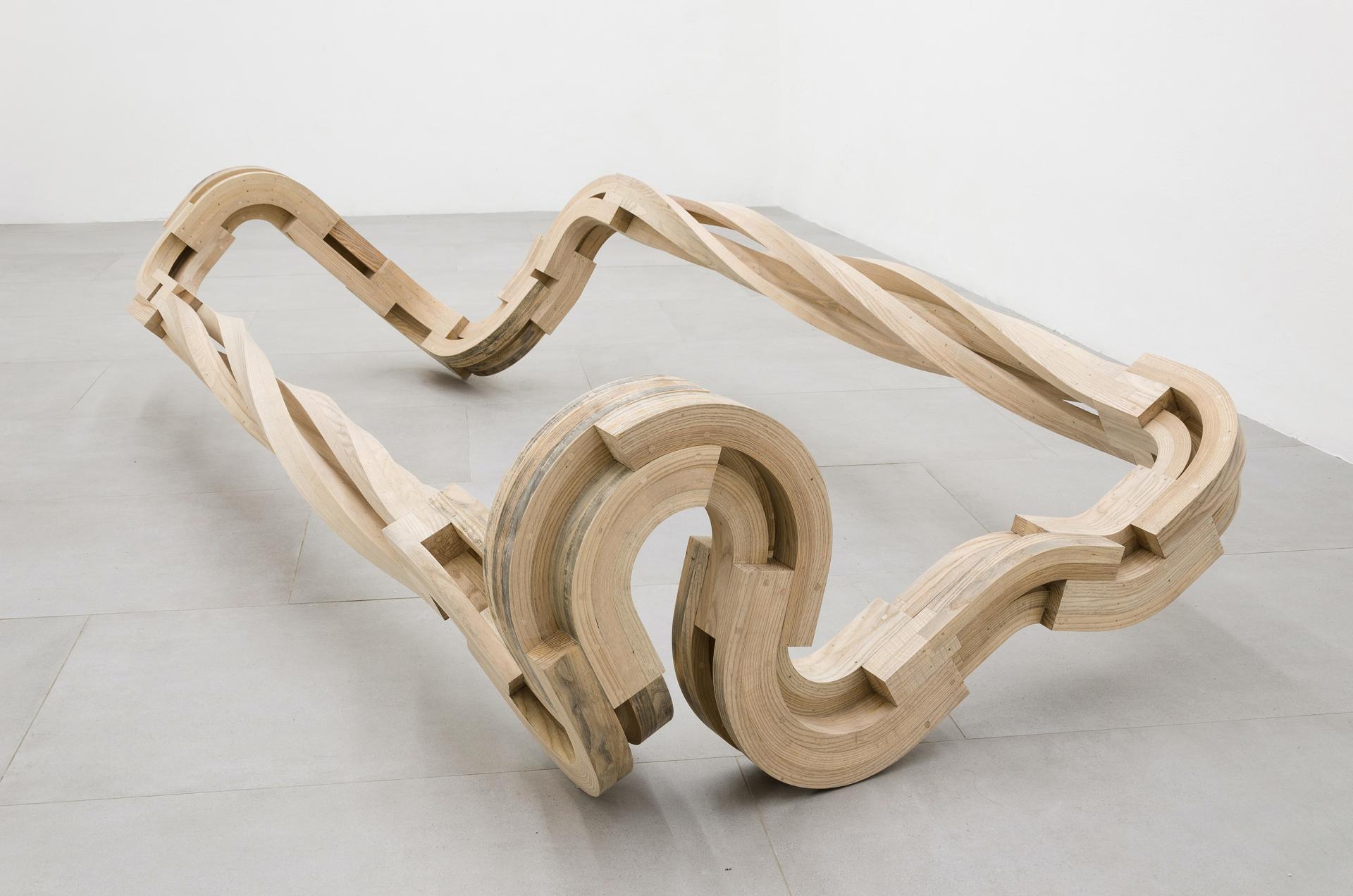
52 x 240 x 120 cm
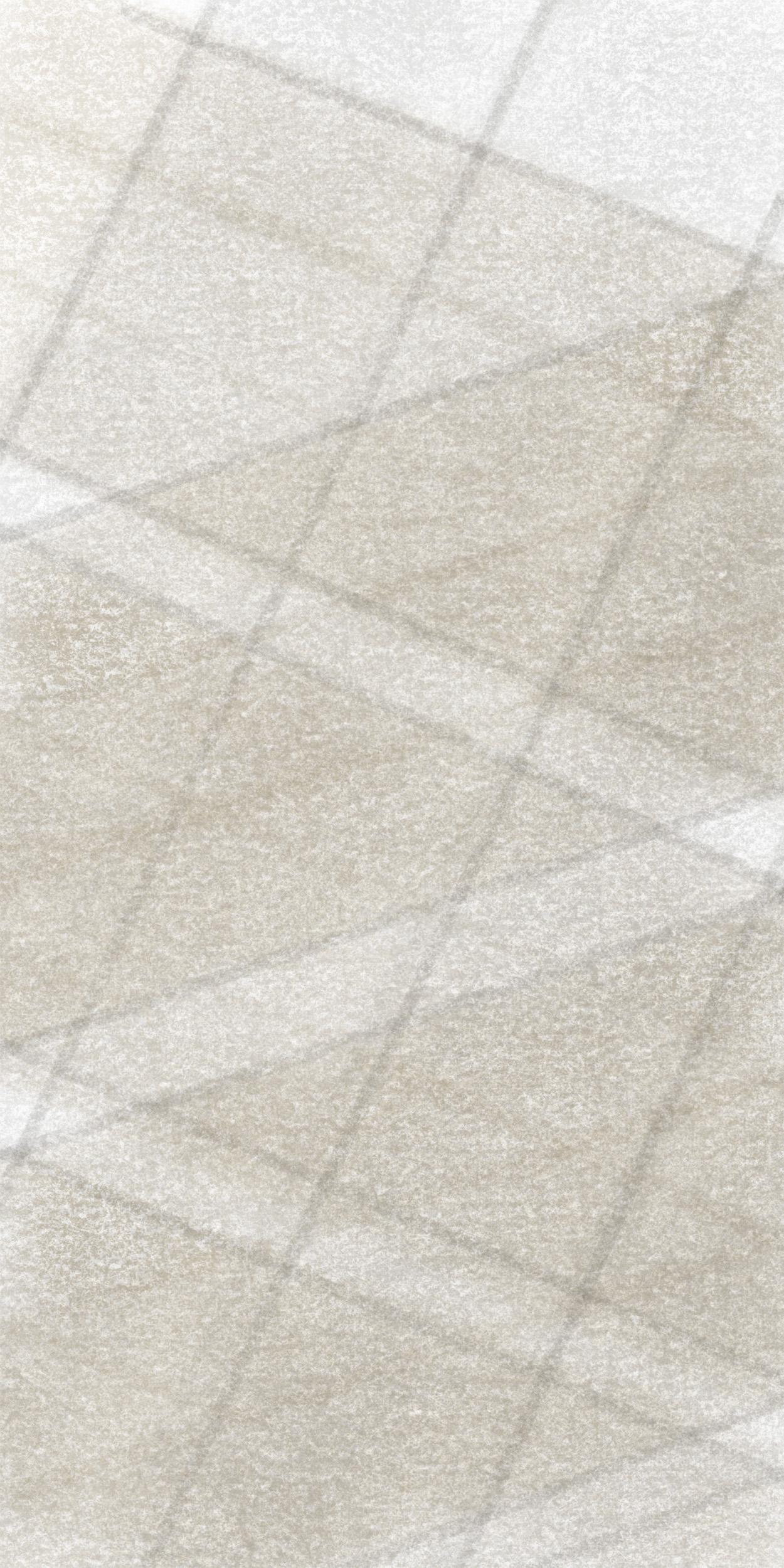
35,5 x 20 cm

35,5 x 20 cm
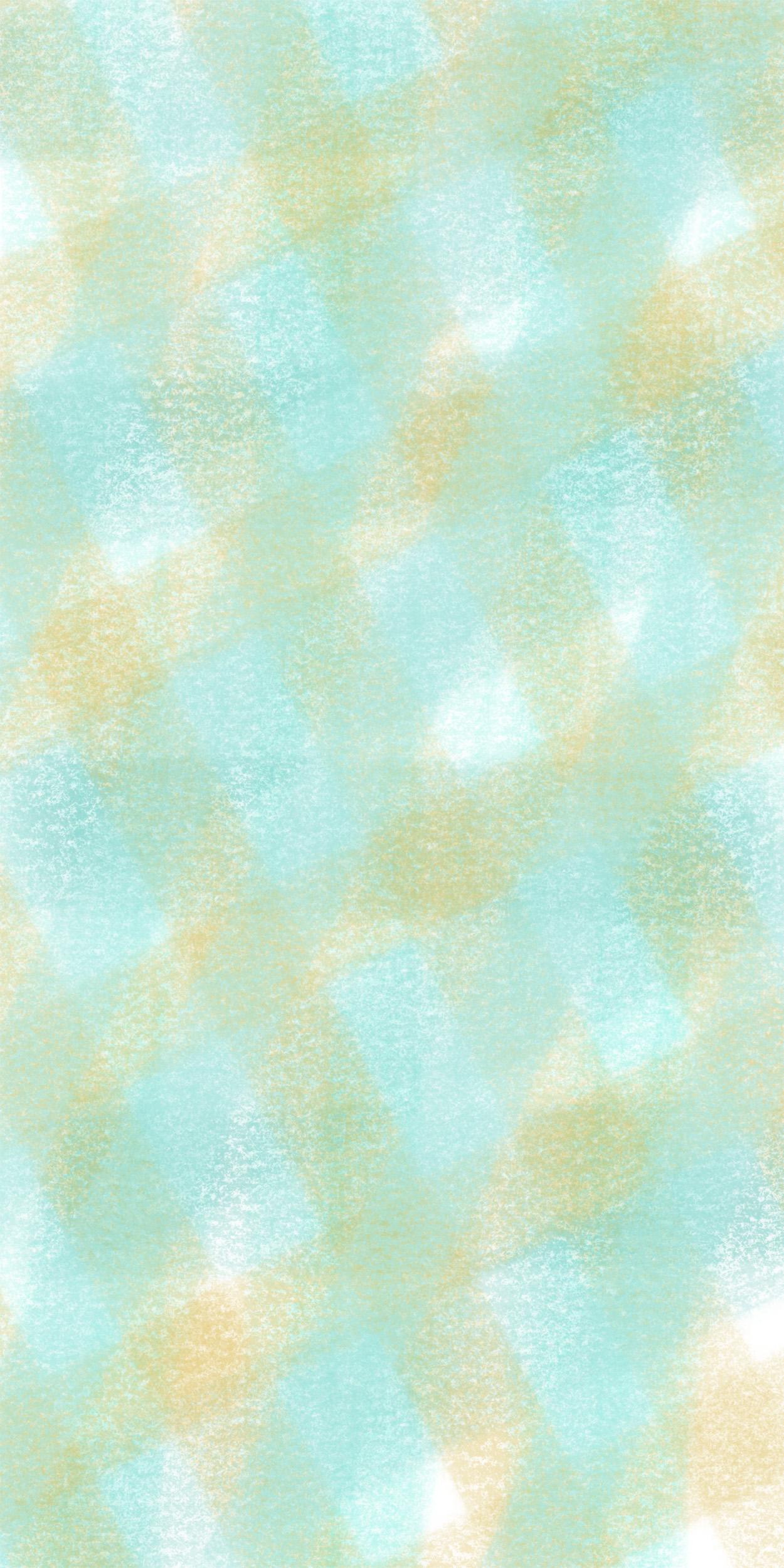
35,5 x 20 cm
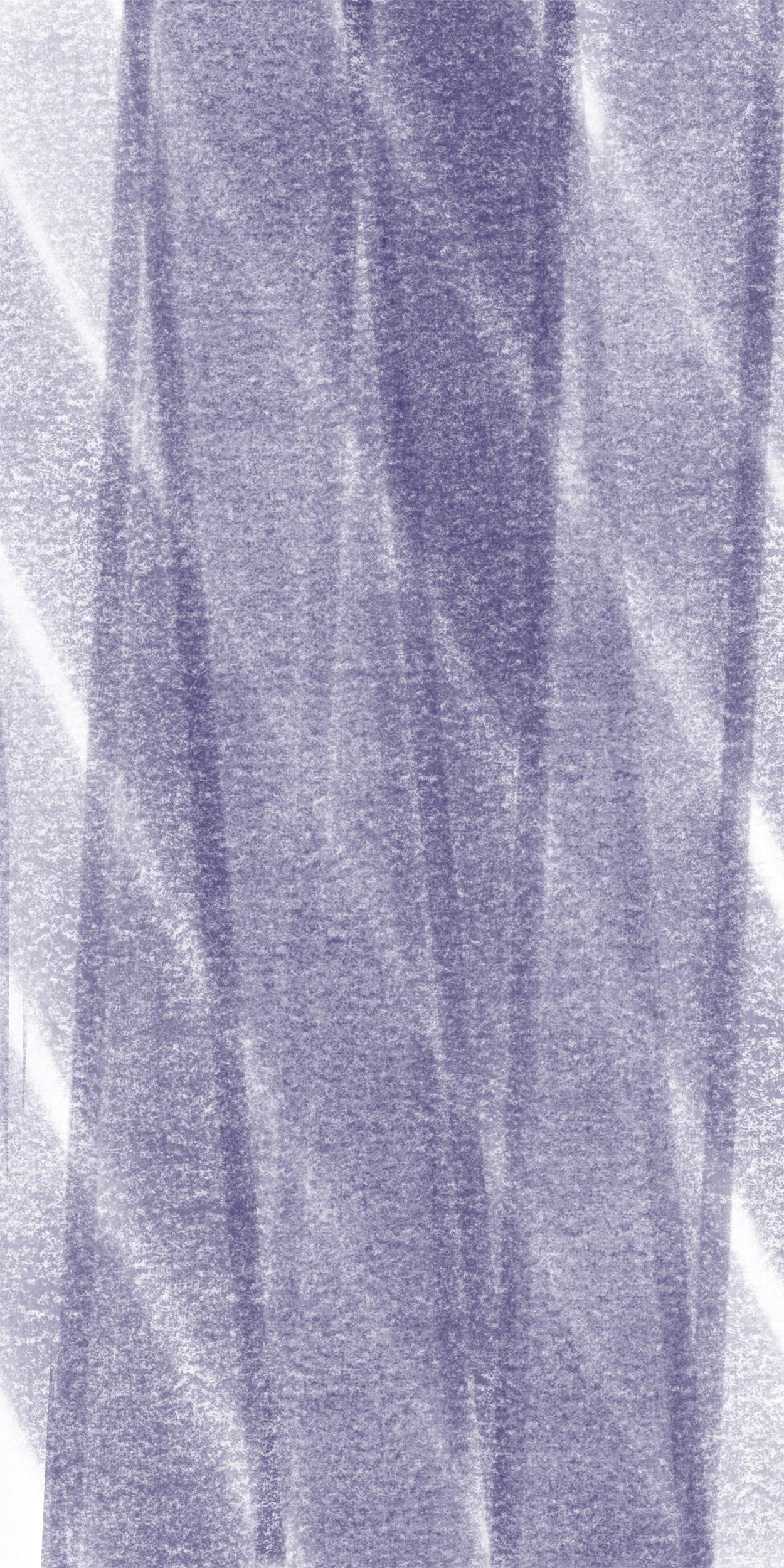
35,5 x 20 cm
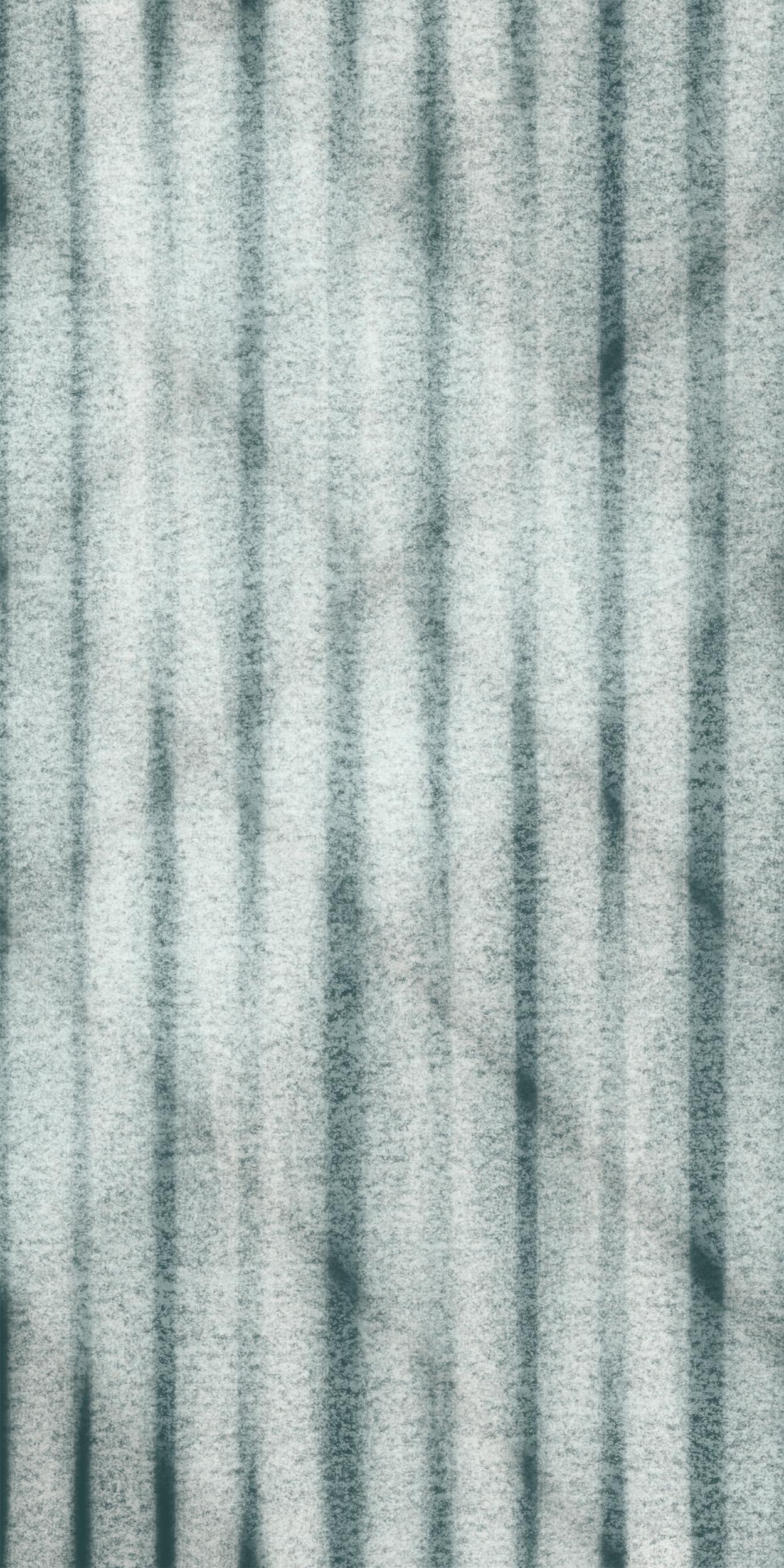
35,5 x 20 cm

35,5 x 20 cm
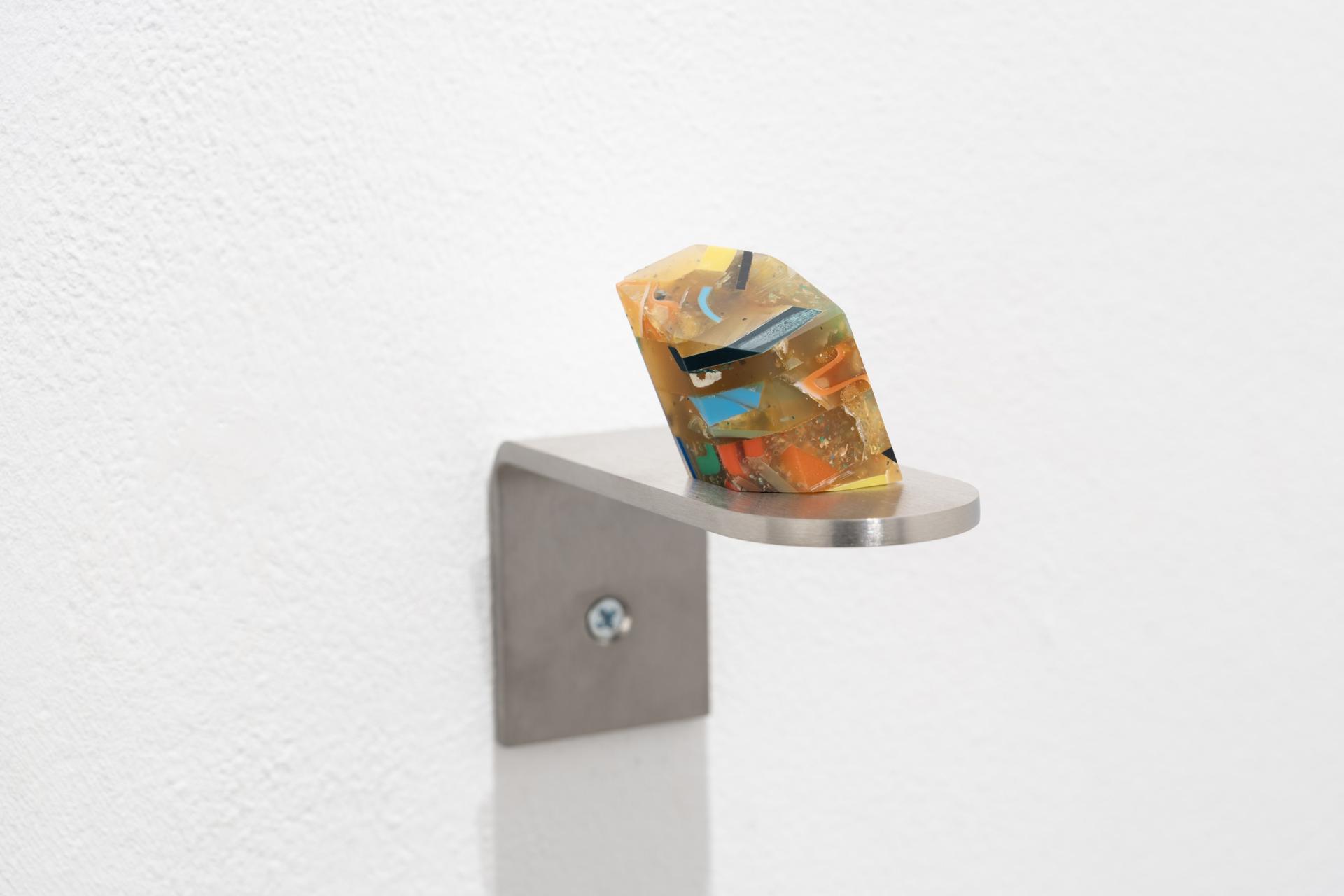
13 x 6 x 15 cm
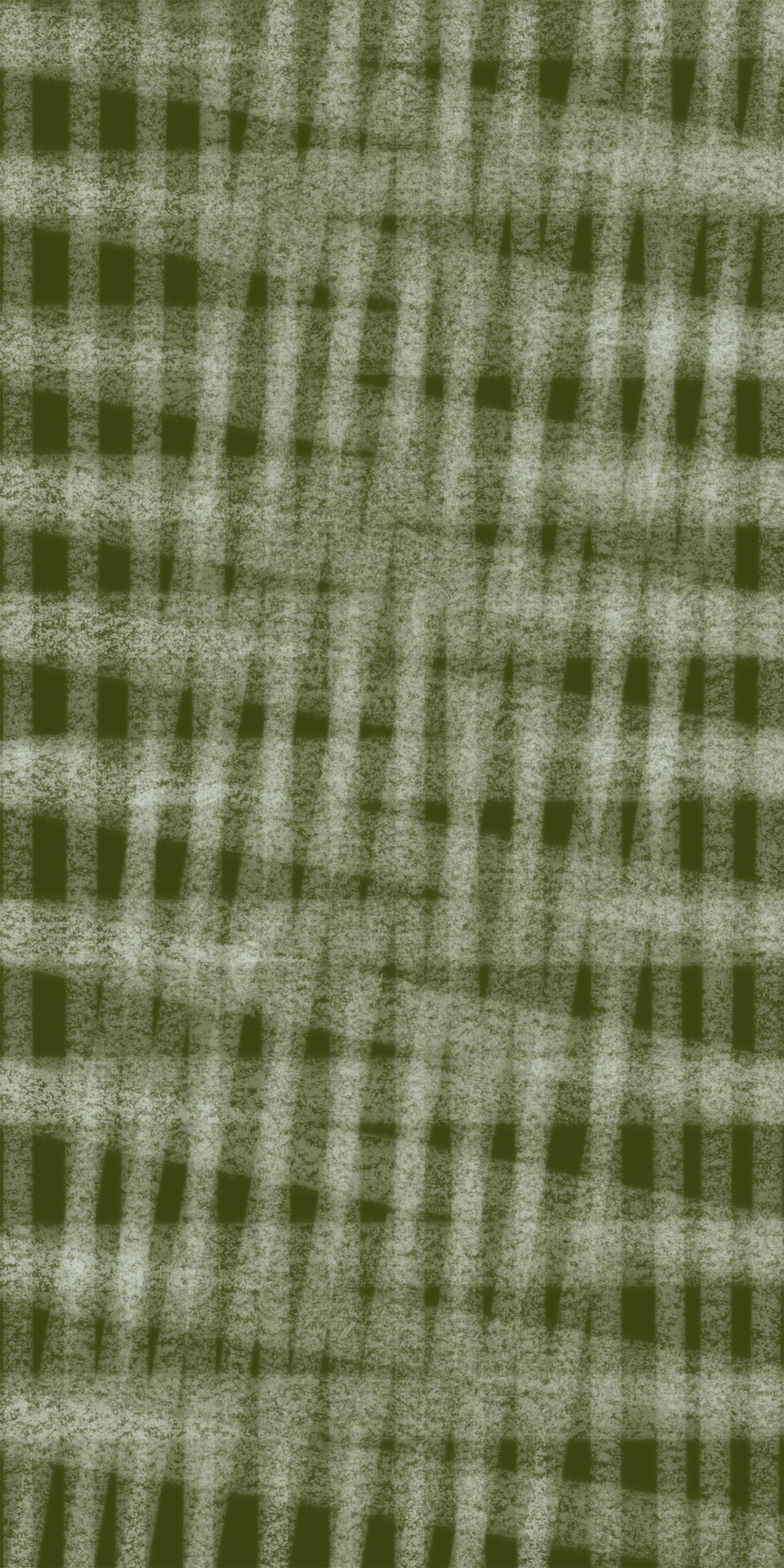
35,5 x 20 cm
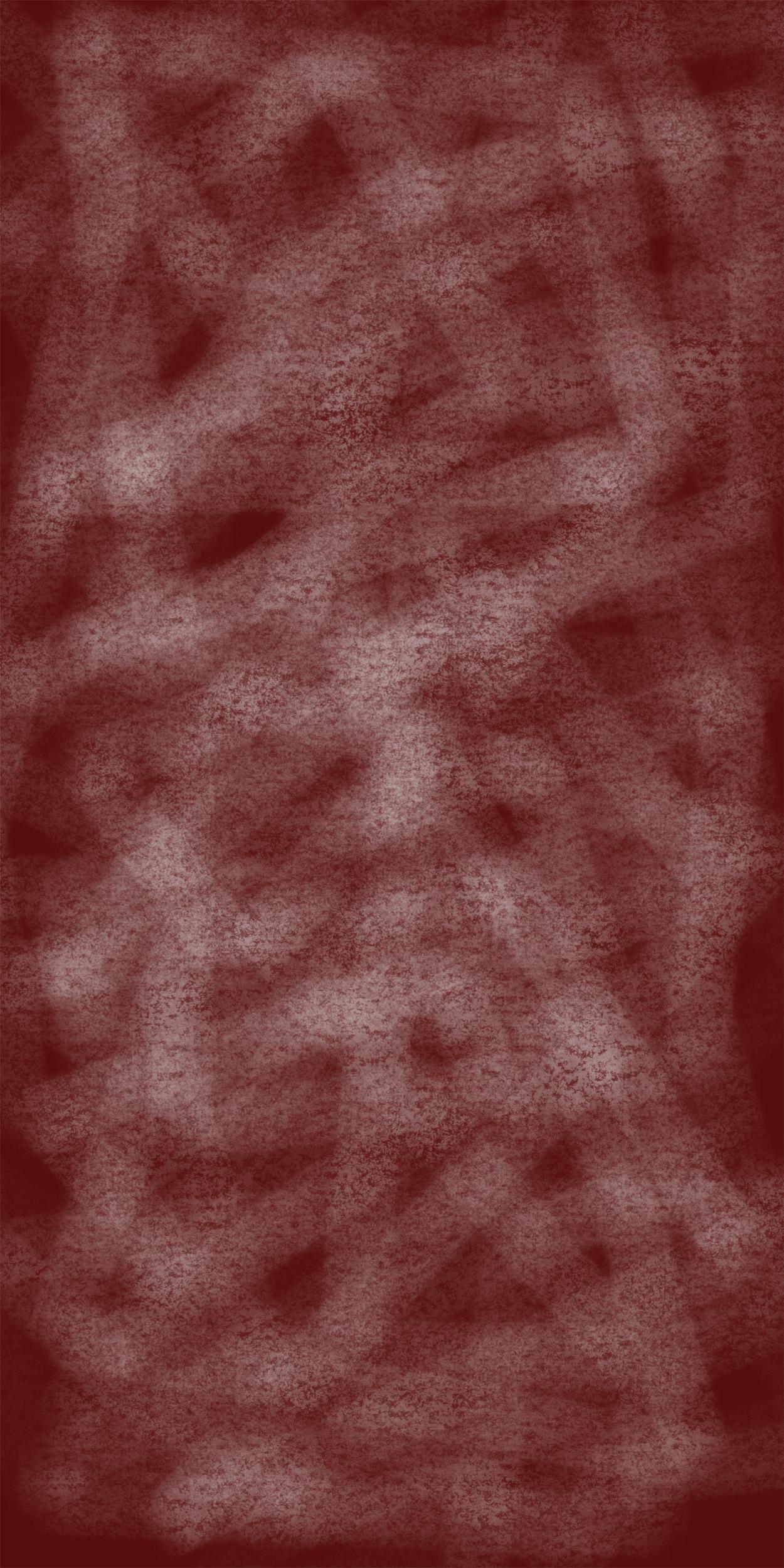
35,5 x 20 cm
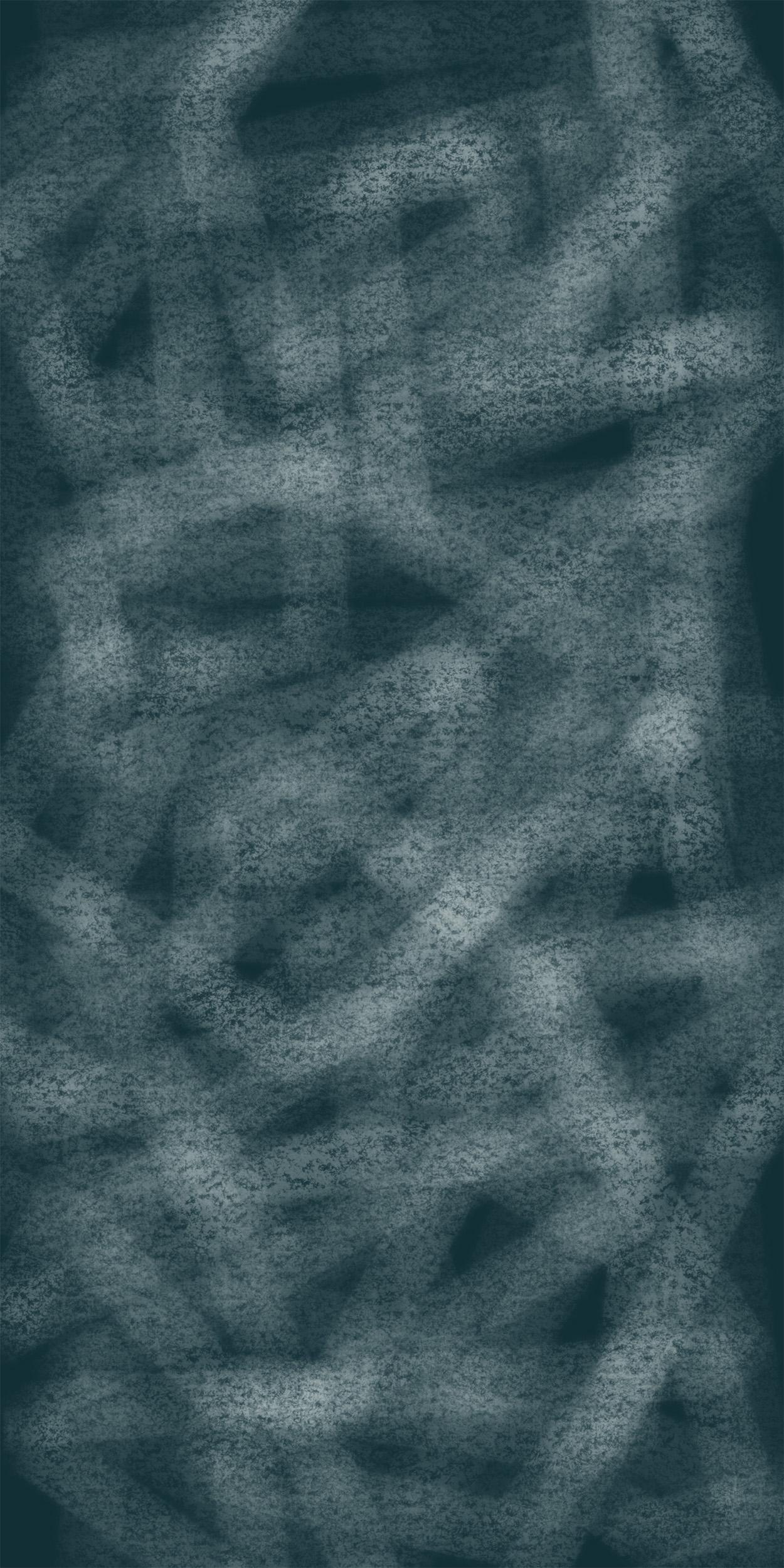
35,5 x 20 cm
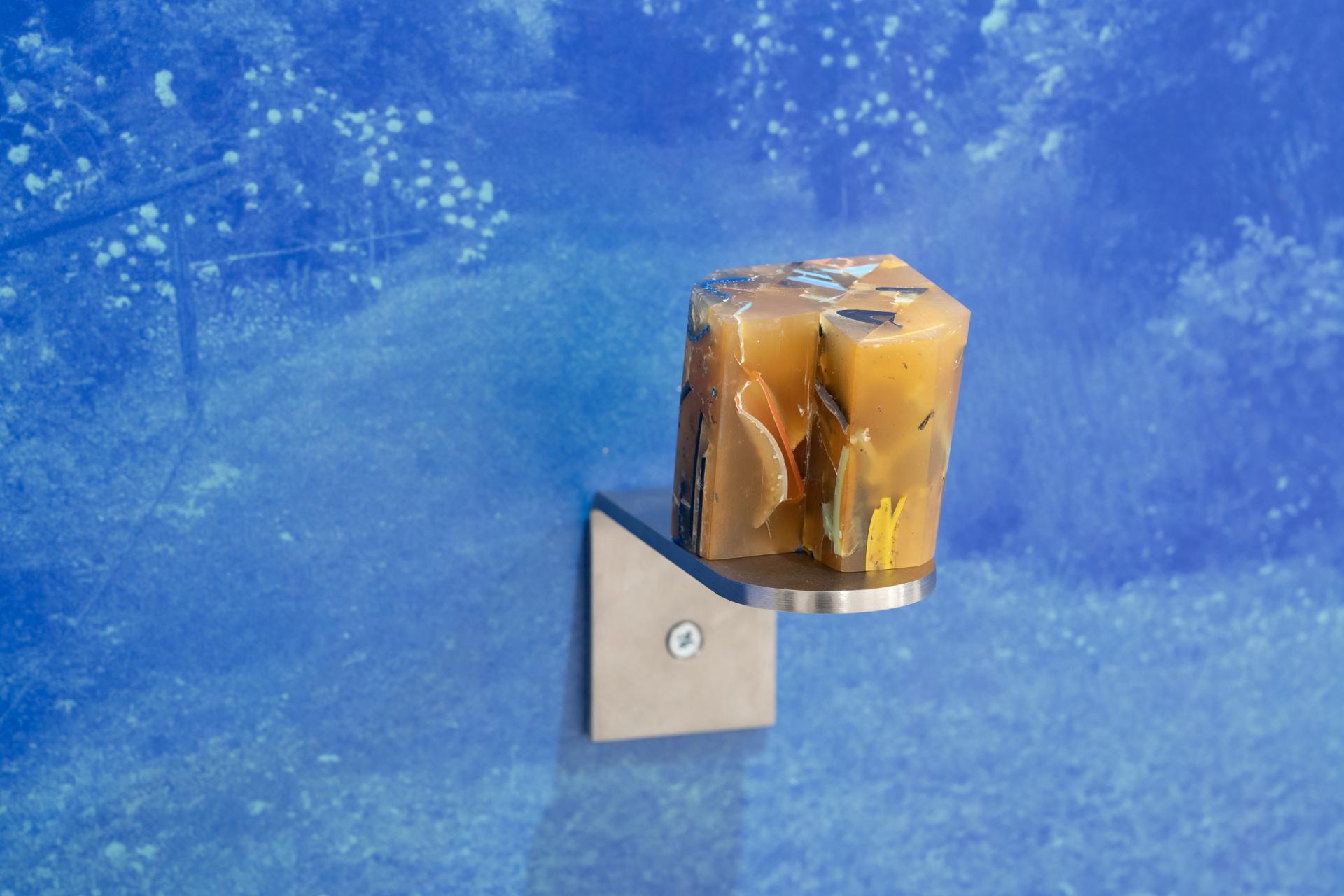
16,2 x 6 x 15 cm
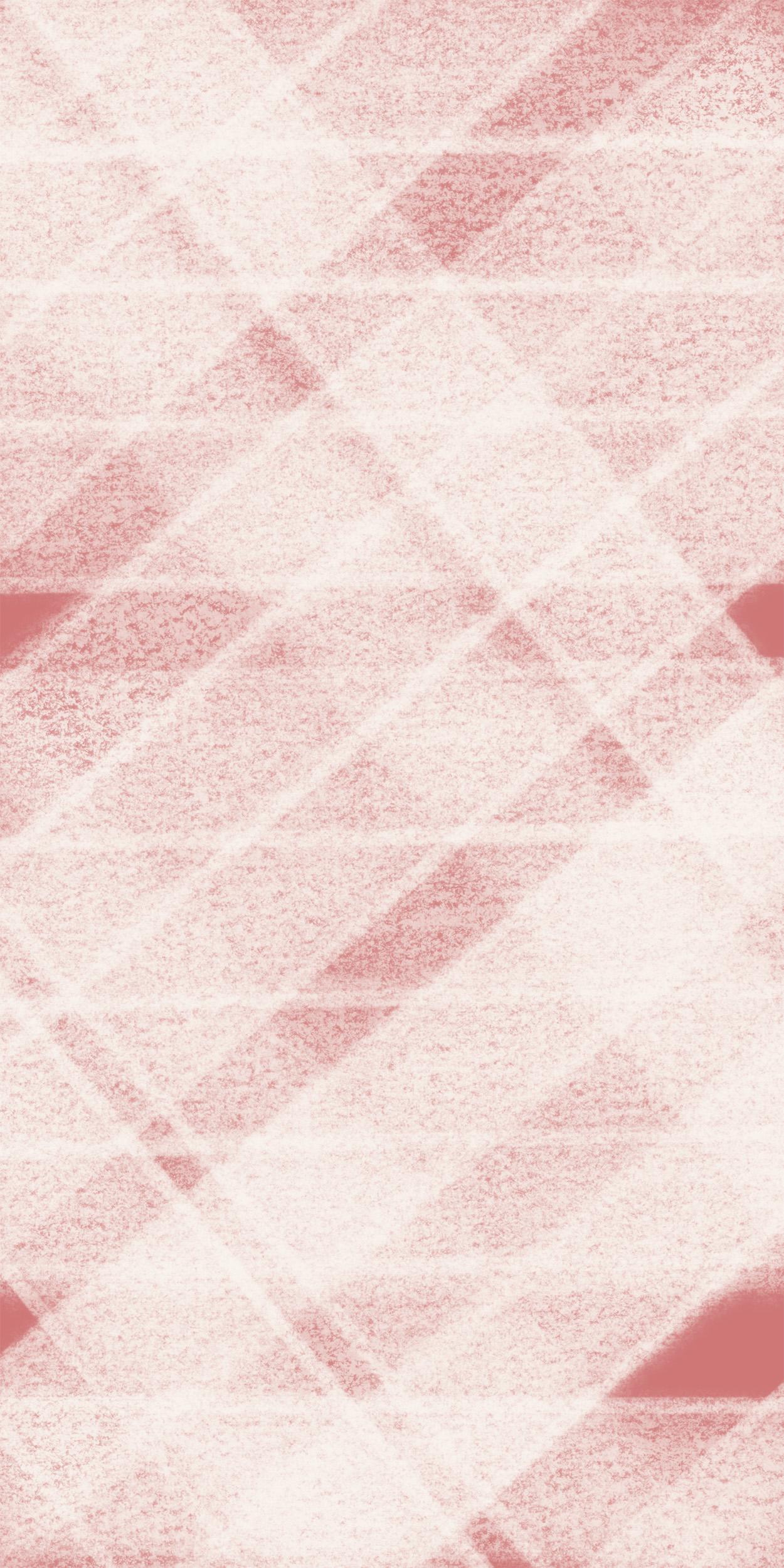
35,5 x 20 cm
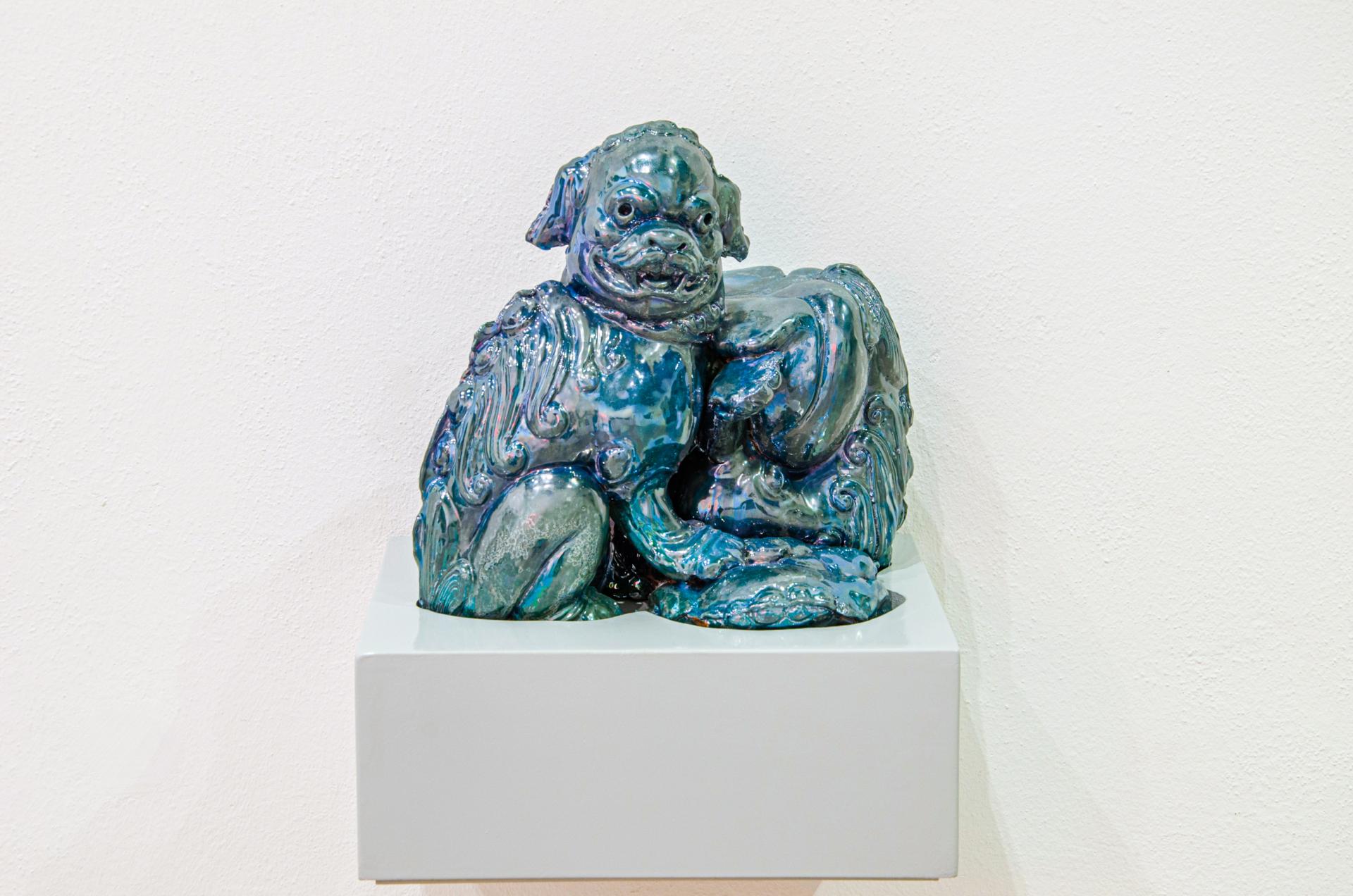
40 x 31 x 24,5 cm
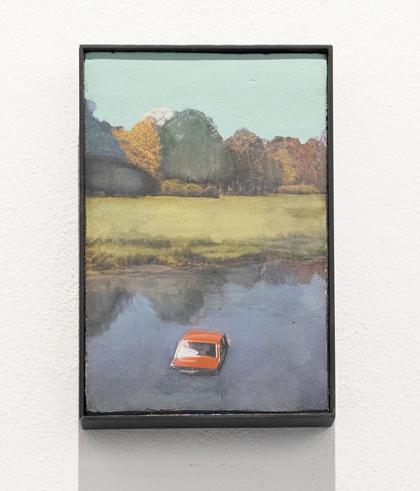
27,5 x 19 cm
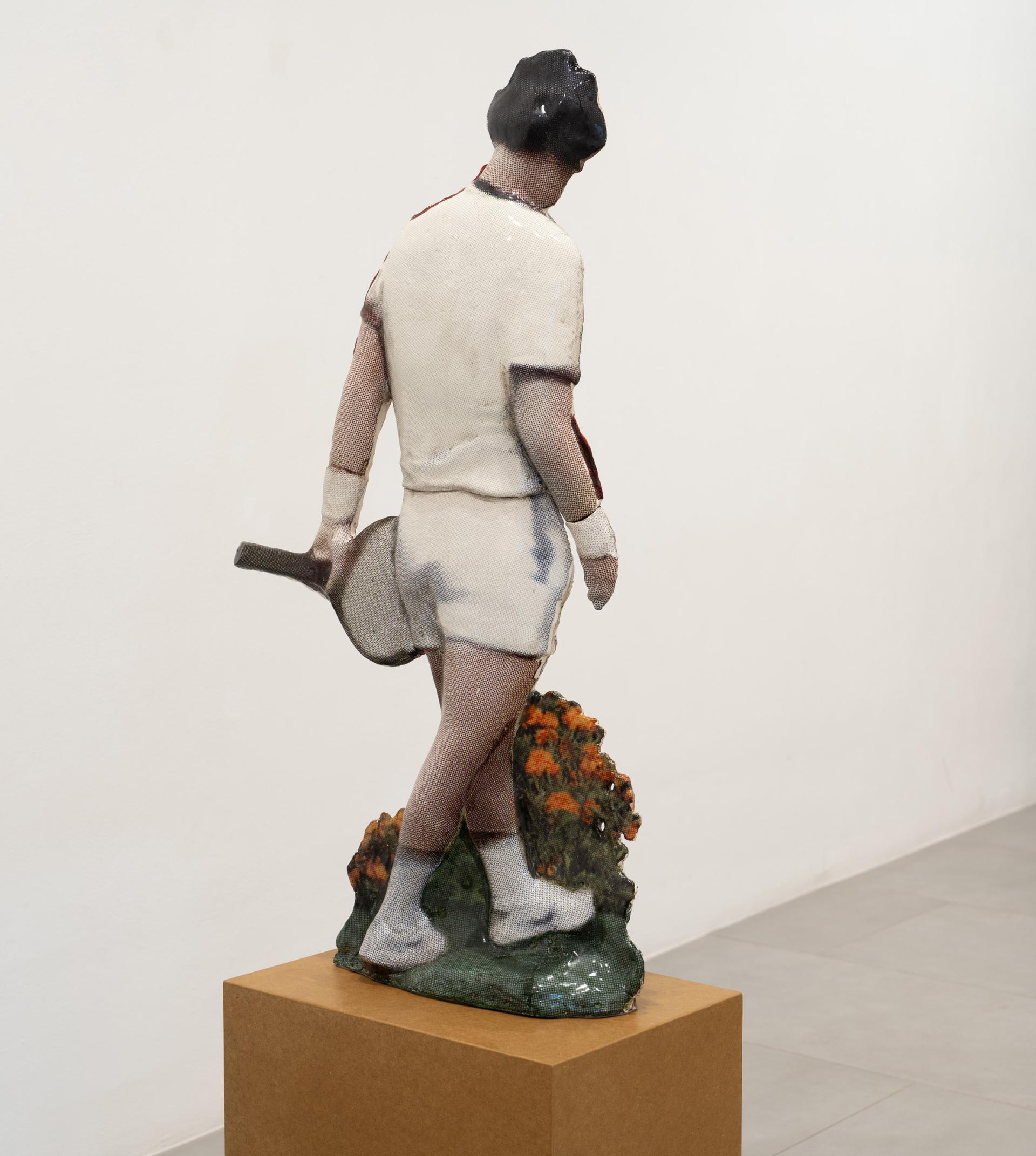
107 x 53 x 18 cm

300 x 248 x 5 cm
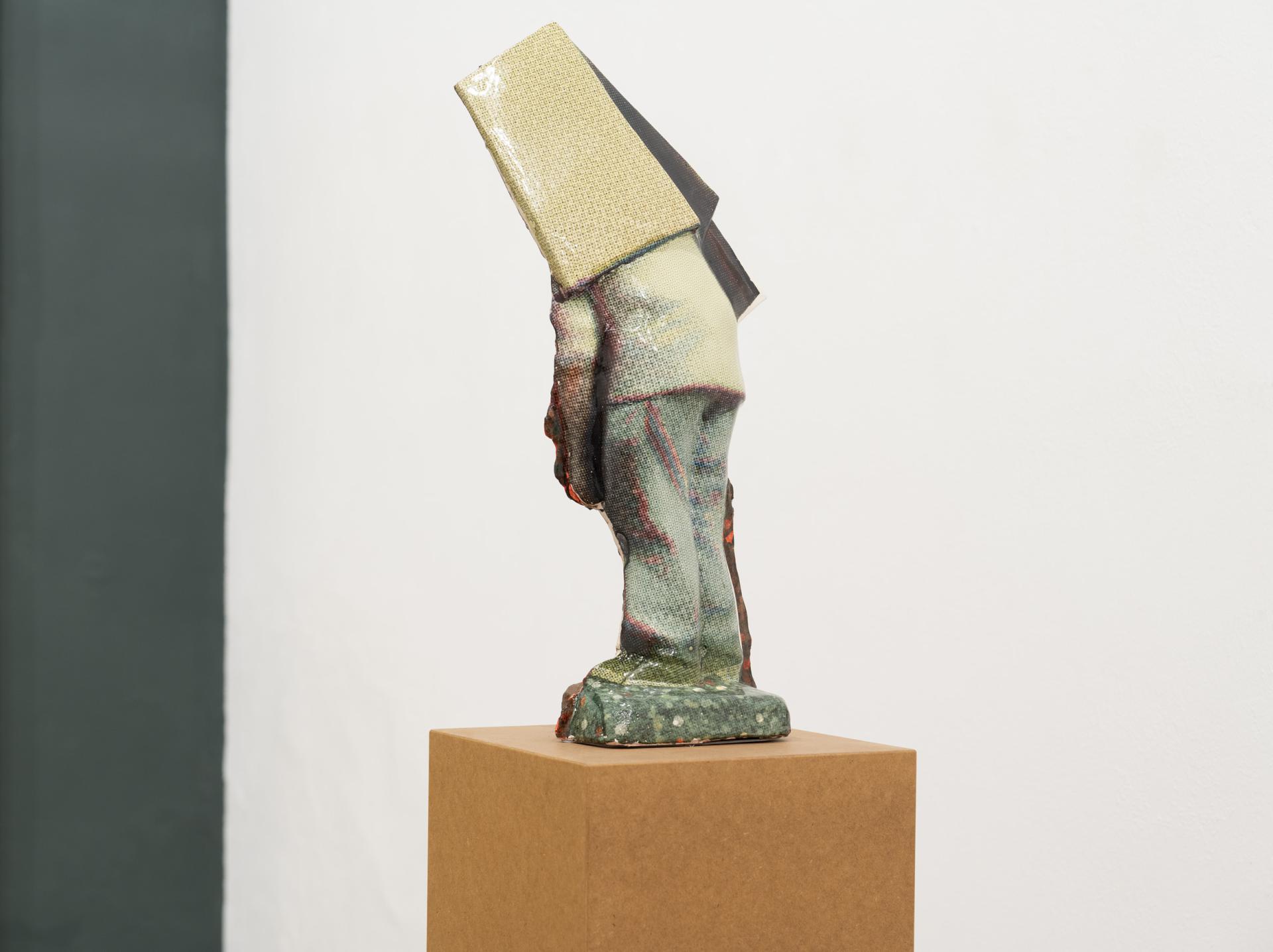
60 x 22 x 13 cm

180 x 250 cm
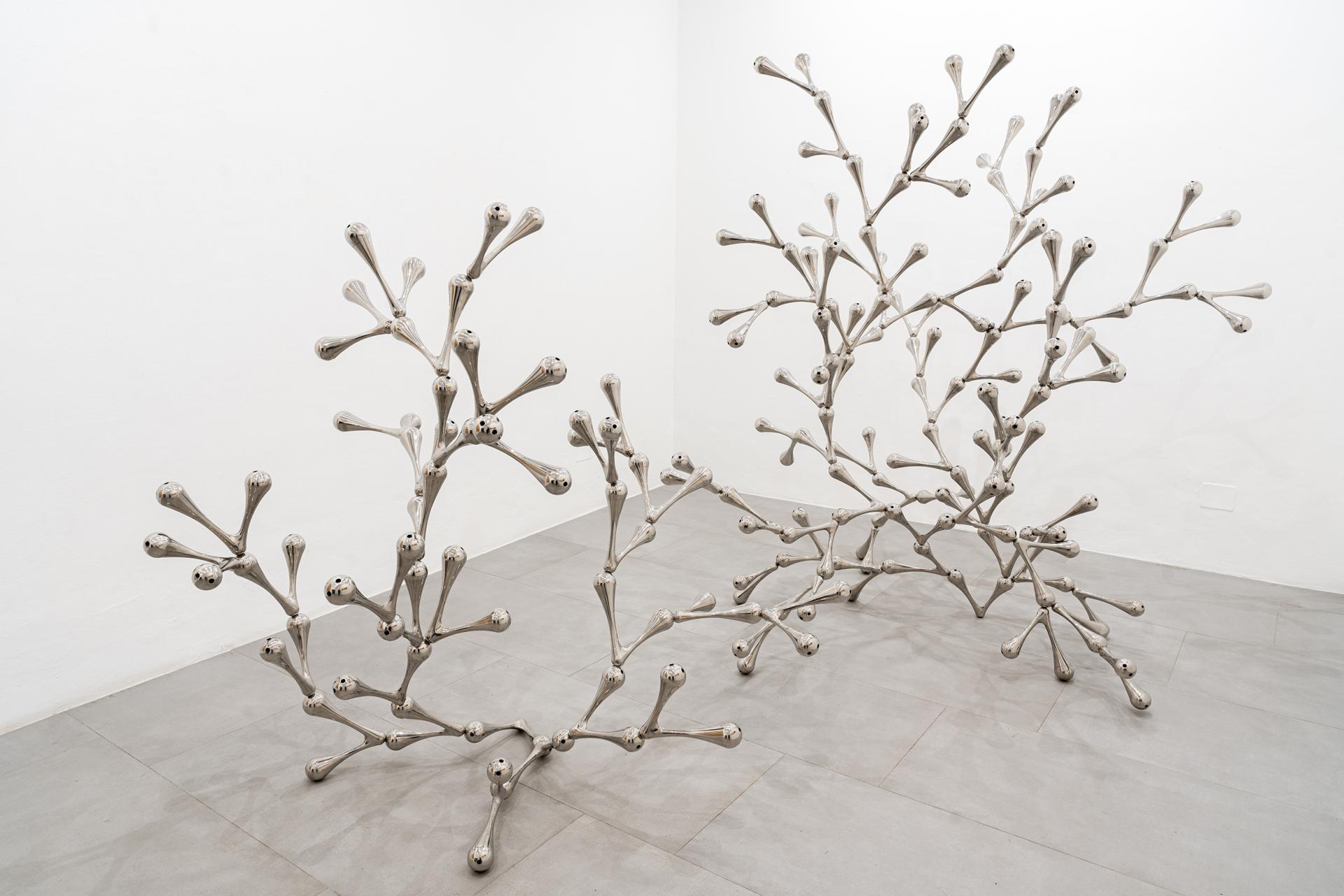
Variable dimensions
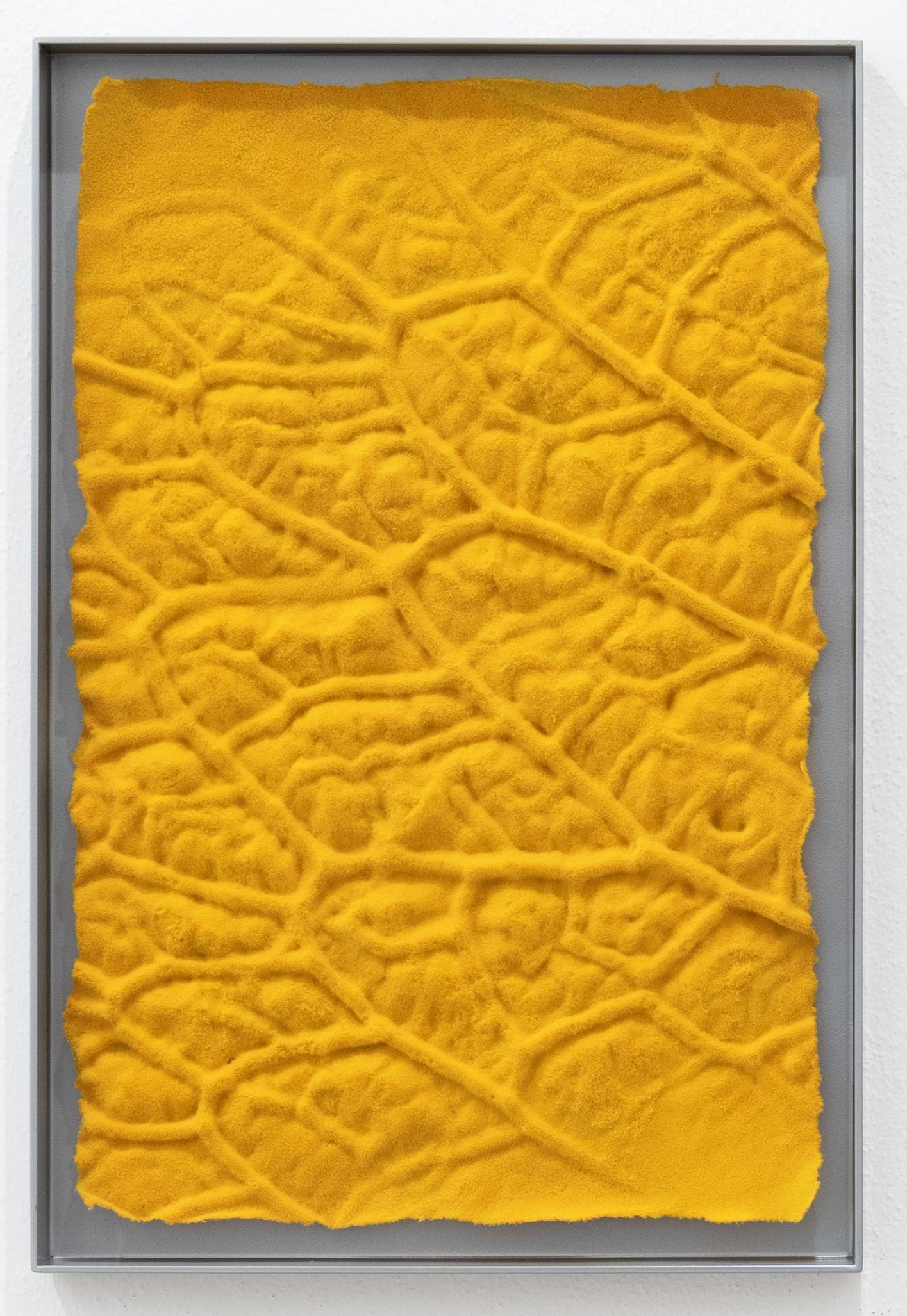
51,5 x 34,5 x 4 cm
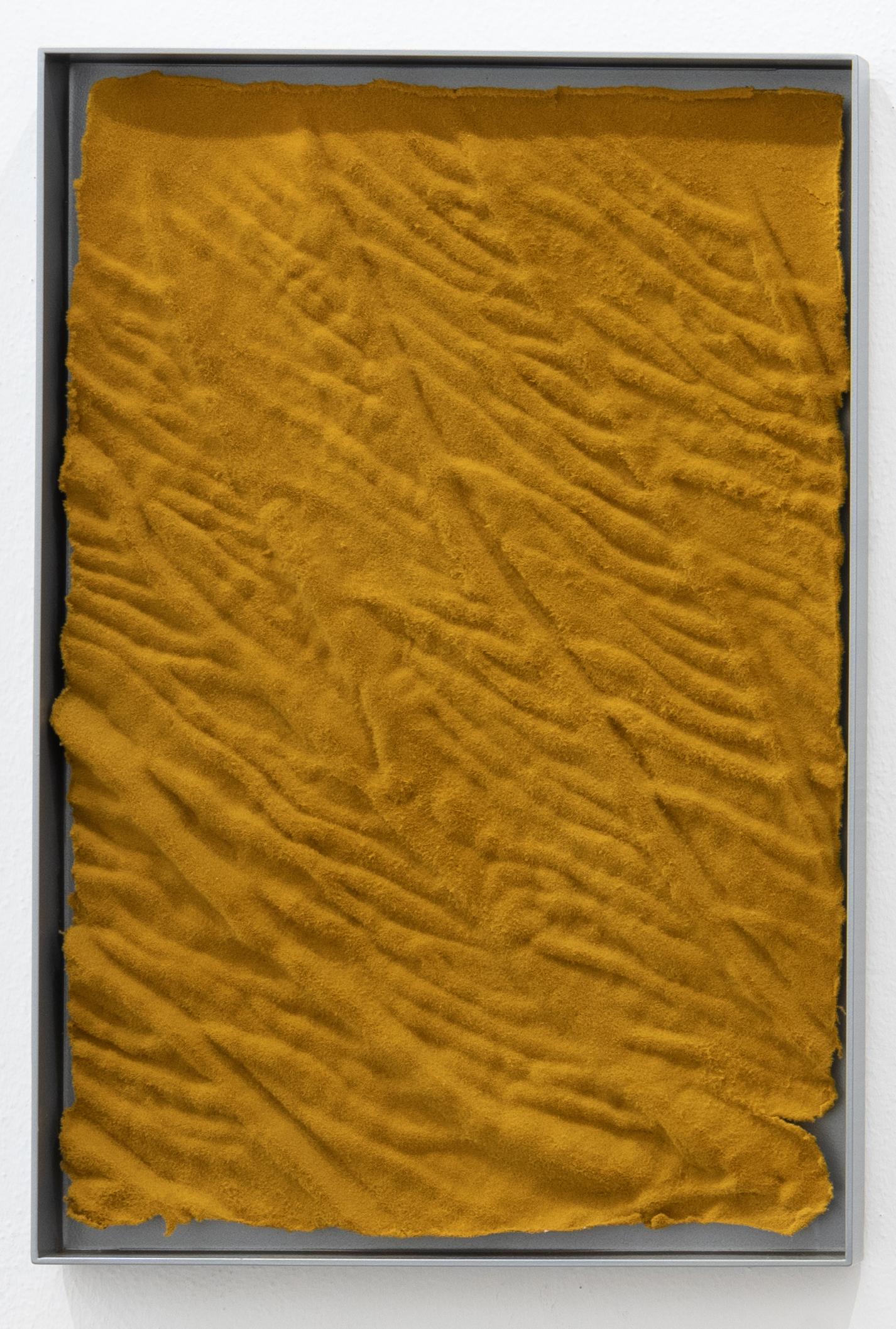
51,5 x 34,5 x 4 cm
